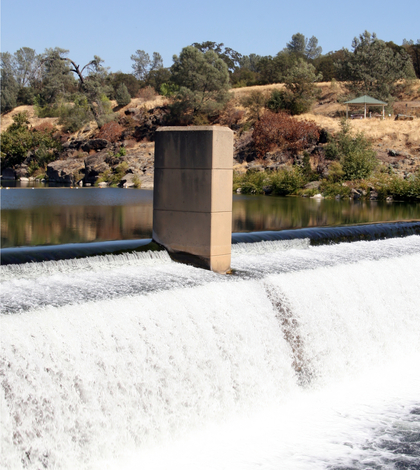A competition to aid in helping migrating juvenile over or around tall dams, sponsored by the U.S. Bureau of Reclamation, has identified four submissions to share in $20,000 for their proposed solutions. Moving migrating juvenile fish past tall dams will ensure habitat connectivity that many threatened and endangered fish populations need to survive and reproduce.
First place honoree, Briana Connors of Cincinnati, Ohio, submitted a plan utilizing a drag conveyor to pass fish downstream offering continuous and rapid transport. The system may manage pressure within the chambers, potentially minimizing the trauma to the fish. A graduate of the University of Cincinnati in 2014 with a degree in chemical engineering, Connors is now employed as a process engineer working on mineral processing systems. Connors will receive $10,000 for her first-place concept.
“My proposed solution used solutions I had seen used in food and chemical plant designs for inspiration,” Connors said. “Prior to reading the problem statement I was not aware of how much resources went into fish relocation at dams. I assumed this is funded by taxes, so to me, any way we can improve methods would lead to more efficient use of tax dollars.”
Second and third place honorees are Californians Ted R. Grygar of San Diego and Joseph Rizzi of Benicia, respectively. Grygar will receive an award of $4,000 and Rizzi’s prize will be $3,500.
Grygar proposed using an Archimedean internal helical device to move small fish downstream past high head dams. Grygar was motivated to enter this prize competition because he could “participate in a field never experienced in my work history.” He has a background in physics and mechanical and electrical engineering.
As the third-place competition winner, Rizzi’s idea was to use nets to guide fish to multiple points, and a flexible pipe attached to a buoy to convey the fish through the dam abutment to the river downstream in atmospheric conditions. Rizzi contends that, “Dams are important and can be made fish friendly, too.” He was interested in entering the competition because he wanted to, “…help Reclamation to help the fish.”
Fourth-place honoree, Kenneth Smith of Colfax, Wisconsin, will receive a prize of $2,500 for a system that uses innovative ways of attracting fish to a collection location, particularly the use of cover, and protecting them from predators at that location.
The four winners of Reclamation’s competition were part of 59 ideas that were submitted. Reclamation collaborated with U.S. Geological Survey, NOAA – National Marine Fisheries Service, U.S. Fish and Wildlife Service and the U.S. Army Corps of Engineers to design and judge this prize competition.
Reclamation will now develop a plan to further test, advance and demonstrate the effectiveness of the submitted ideas. The federal government has a perpetual, no-cost right to use any of the ideas submitted in the future.
 California Water News Daily Your Source For Water News in California
California Water News Daily Your Source For Water News in California


